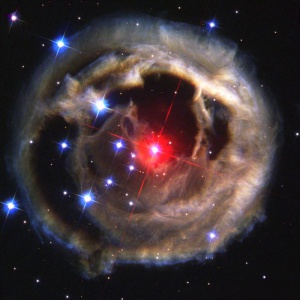Astronomy

Astronomy is the scientific study of stars, planets, outer space, interstellar phenomena, and the universe. It is a broad field that contains many interesting facets, and an interest in astronomy can range from detailed study to simple wonder while looking at the nighttime sky.
Stargazing
Unaided eye
The easiest way to explore basic astronomy is to go outside on a clear night and look up at the stars. The only equipment needed is a jacket or comfortable blanket. Light pollution from cities will cause a high amount of variablility in viewing conditions, but it should be possible to make out a few constellations as well as large magnitude stars, the planets Venus, Mars, Jupiter, and Saturn, and the Moon.
For optimal conditions, travelling to an unpopulated area far from city lights such as mountains or deserts can provide a stunning experience with stars scattered like sparkling diamonds across a black velvet sky. The band of stars stretching across the entire sky is the view looking in towards the center of the Milky Way galaxy we are part of. Simply laying back and watching the sky for five minutes should reveal at least one "shooting star", a speck of ancient rock that enters the earth's atmosphere and burns up due to friction, creating a brilliant streak across the sky.
Binoculars
With the addition of binoculars, it becomes possible to see the craters of the Moon and its phase, the phases of the planet Venus, the four largest moons of Jupiter, and perhaps hints of the rings of Saturn. It is also possible to see the nearby Andromeda galaxy, the Orion Nebula, and many other objects.
Software
There is a large number of software to help study the universe, from star charts to photo galleries to interactive planetarium software.
Stellarium is an earth-based planetarium program that simulates the view from a location on earth for time and date, with real-time atmosphere effects. You can change the rate of time to provide a frozen point of view or an accelerated time-lapse style display. It lets you explore the sky and zoom in on photorealistic objects to get an idea of what you can see in real life.
Celestia is a 3D universe simulator that models the entire solar system including satellites, 10,000 of the nearest stars, and many other objects. The program allows seamless free travel anywhere in the universe and gives lots of useful information as well as offering stunning vistas. It is simple to observe the rotation of moons and planets and view eclipses, comets, and extrasolar planetary systems. You can also travel to other stars to see how the sky and constellations would appear from other star systems.
External links
- Astronomy on Wikipedia
- Stellarium, an Open Source planetarium for Linux, Mac OS X, and Windows
- Celestia, an Open Source universe simulator for Linux, Mac OS X, and Windows